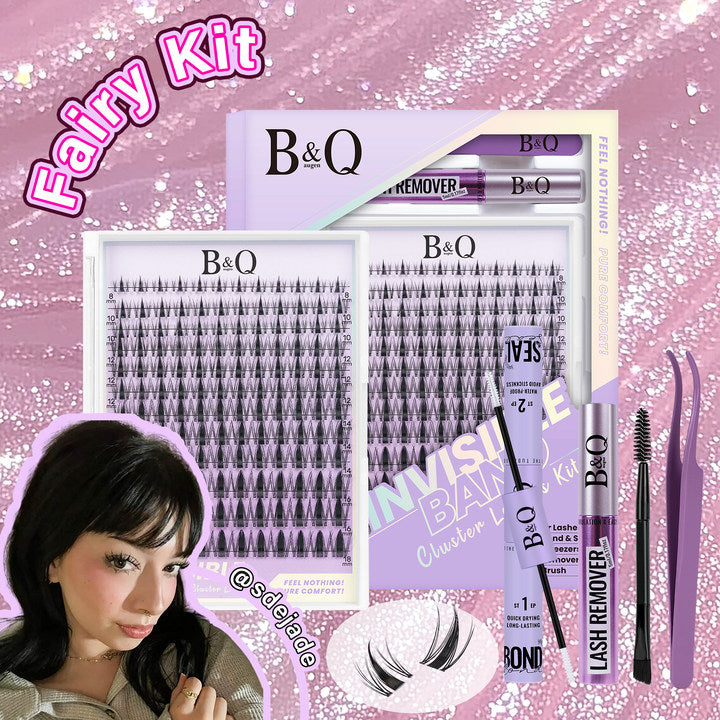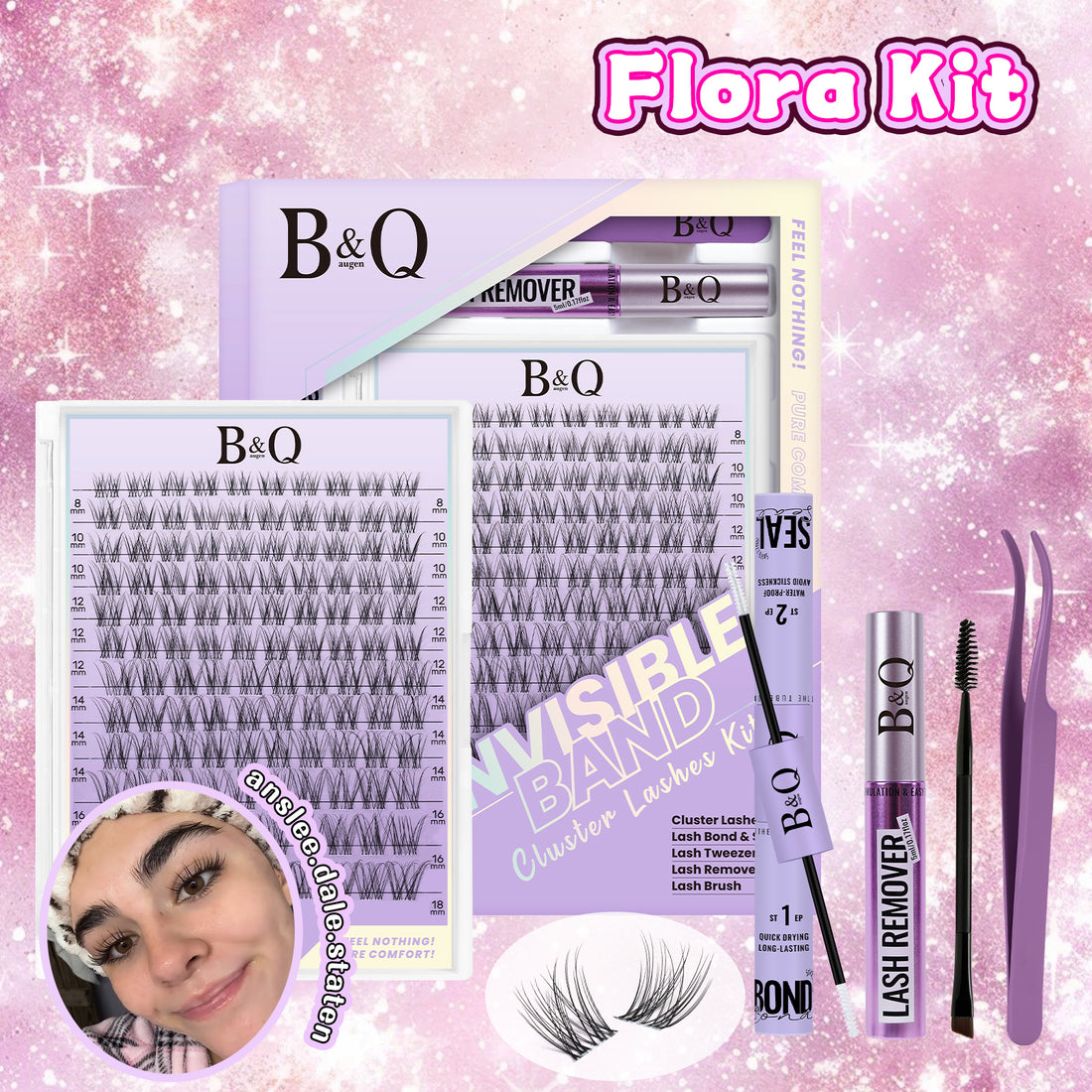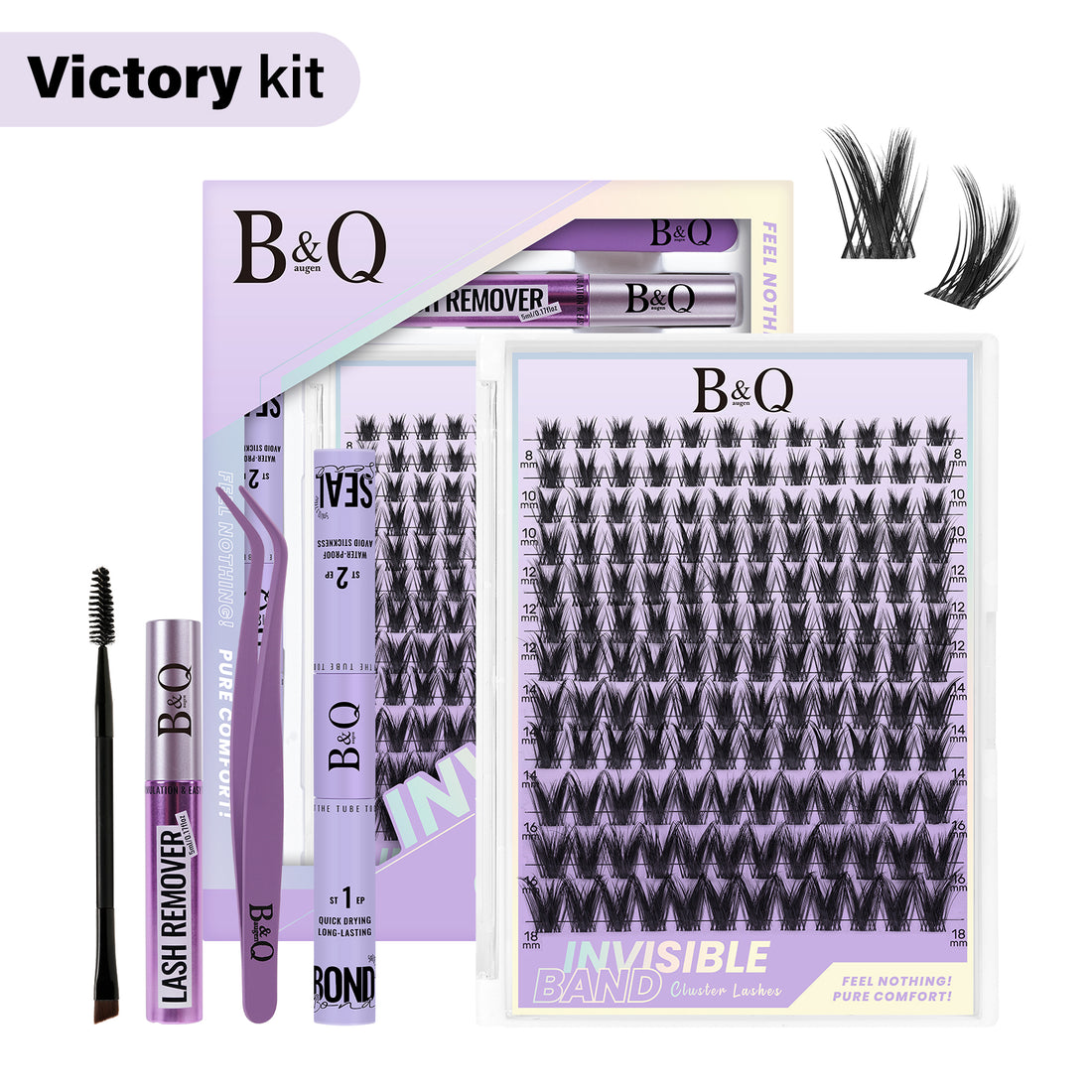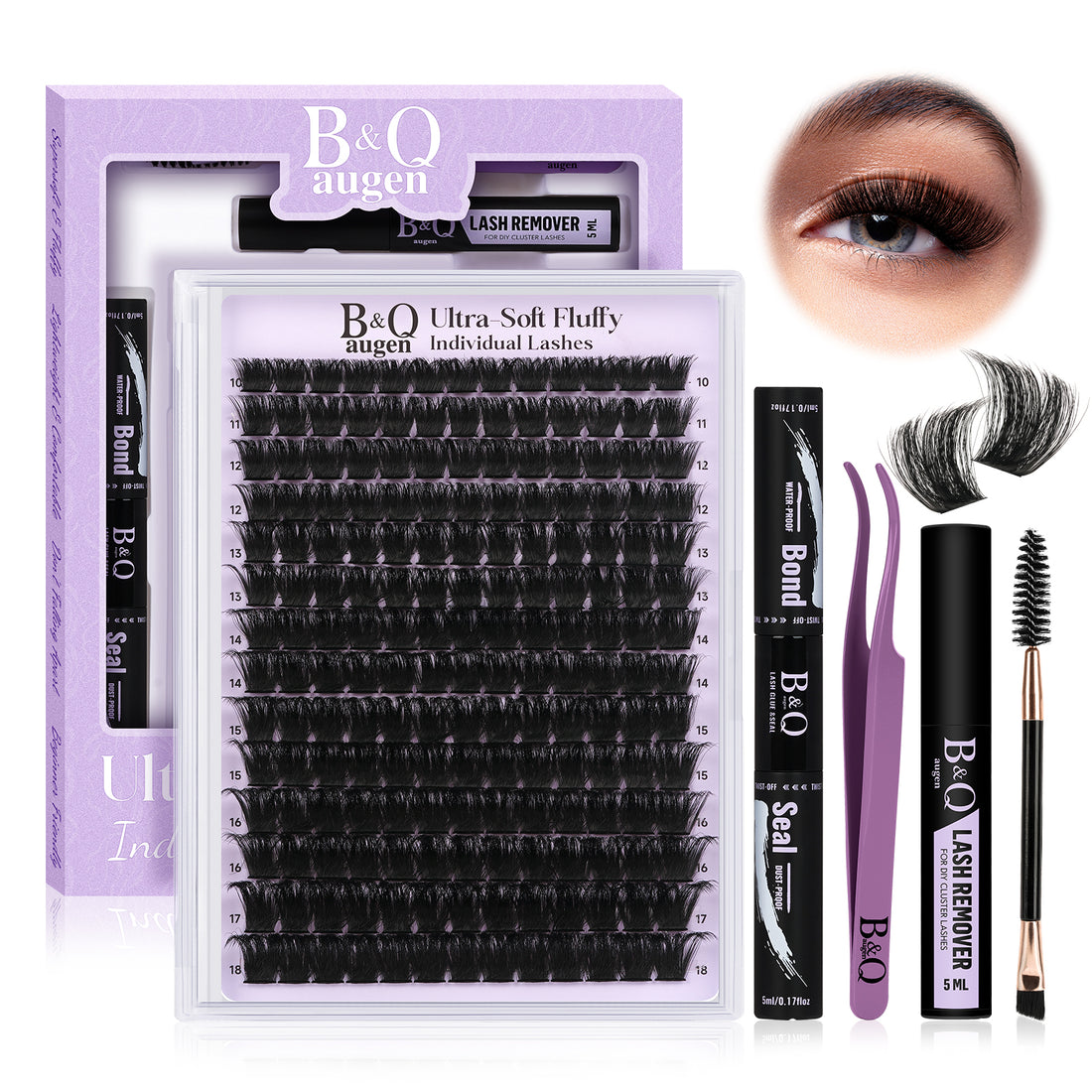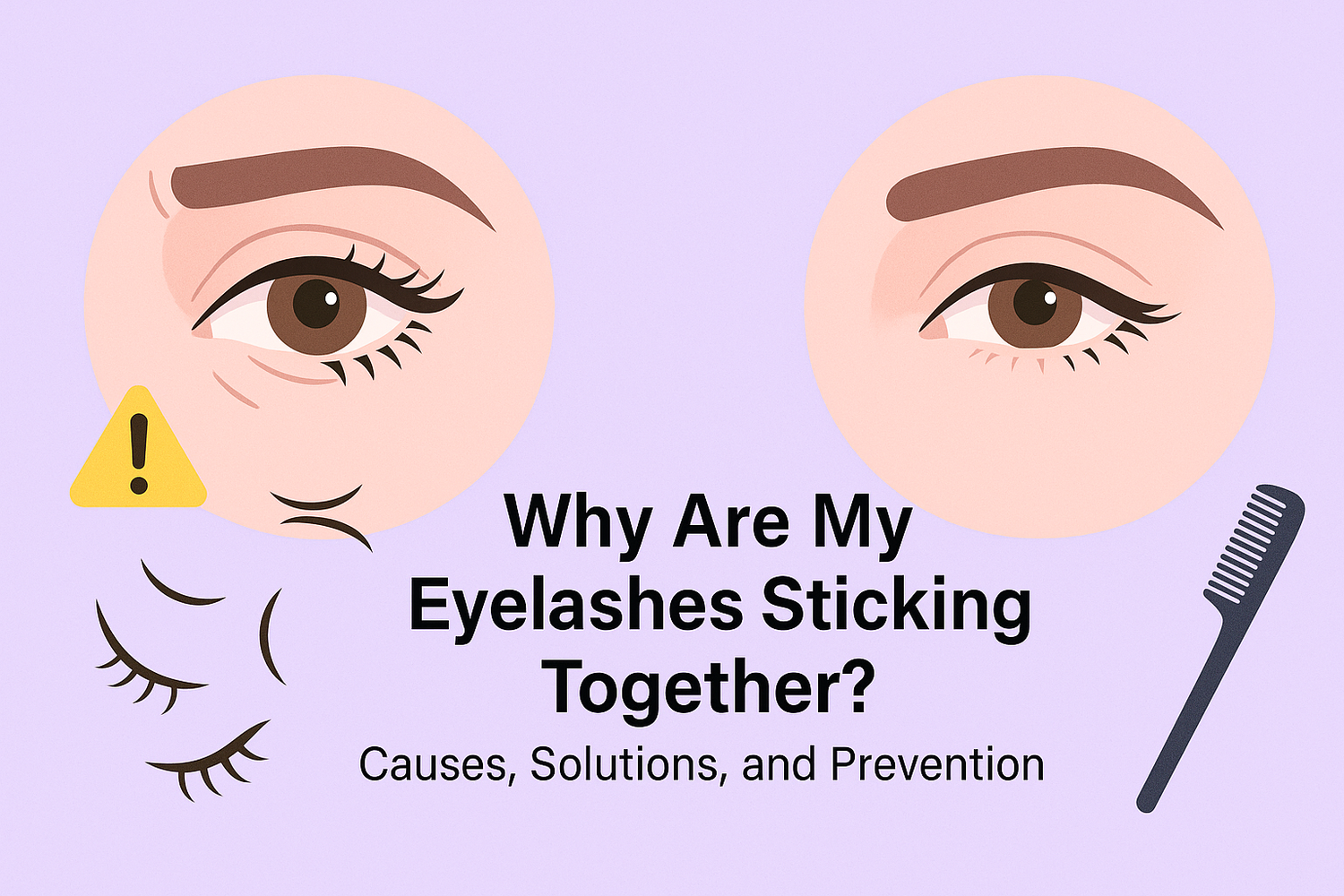If you’ve ever looked in the mirror and noticed that your eyelids seem shinier than the rest of your face — even without makeup — you’re far from alone. Oily eyelids are a surprisingly common skincare issue. While they’re usually harmless, they can lead to makeup melting off, eyeliner refusing to stay put, or even DIY lash extensions not lasting as long as they should.
But why does this happen in the first place? And more importantly, what can you do about it? Here’s everything you need to know.
The Science Behind Oily Eyelids
Like all skin, the delicate skin on your eyelids contains sebaceous glands — tiny oil producers that keep your skin hydrated and protected. However, certain factors can cause these glands to go into overdrive. Let’s look at the most common culprits:
1. Genetics and Natural Oil Production
Some people simply have more active sebaceous glands than others — it’s often written in your DNA. If oily skin runs in your family, chances are your eyelids will follow suit. Hormonal changes such as puberty, pregnancy, or stress can also boost oil production.
2. Your Meibomian Glands Are Working Overtime
Along your lash line are meibomian glands, which release oils into your tear film to keep your eyes lubricated. When they’re overactive, you may notice that greasy feeling on your eyelids. While this oil is essential for eye health, too much can lead to shine and makeup struggles.
3. Environmental and Seasonal Factors
Heat and humidity stimulate your sebaceous glands. If you live in a warm climate or it’s the middle of summer, oiliness around the eyes is more likely.
4. Skincare and Makeup Habits
Using heavy creams or rich eye moisturizers too close to your lash line can clog pores and lead to increased oil production. Similarly, harsh cleansers that strip your skin of moisture can trigger it to produce even more oil as a defense mechanism.
5. Makeup Buildup and Poor Cleansing
Failing to remove eyeliner, eyeshadow, or mascara properly can block oil glands, causing them to work harder. Using expired products may also irritate the skin and increase oil production.
Should You Worry About Oily Eyelids?
In most cases, oily eyelids are perfectly normal. Just as some people have oily foreheads or dry cheeks, it’s natural for your eyelids to behave differently from the rest of your face. And remember: a certain amount of oil is beneficial. The oils from your meibomian glands keep your eyes from drying out too quickly.
However, if your eyelids suddenly become much oilier than usual or are accompanied by other symptoms, it’s worth paying attention.
When Oiliness Signals Something Else
While greasy eyelids alone usually aren’t a sign of trouble, they can sometimes point to underlying issues, especially if you notice:
-
Redness, irritation, or swelling: Could be a sign of blepharitis (inflammation) or an infection.
-
Crusty buildup: Might indicate blocked oil glands or bacterial growth.
-
Sudden changes: Hormonal imbalances or skin conditions like seborrheic dermatitis can cause abrupt oil increases.
-
Frequent styes: These small, painful bumps develop when oil glands become blocked.
If any of these symptoms occur, consult a dermatologist or eye specialist for proper evaluation.
Smart Ways to Control Eyelid Oiliness
While you can’t completely stop your glands from producing oil (and you shouldn’t want to), there are many ways to manage the shine and keep your eyelids balanced.
1. Keep Your Eyelids Clean — Gently
Use a mild, fragrance-free cleanser or micellar water to clean your eyelids once or twice a day. Harsh cleansers strip away essential oils and trigger your skin to produce even more, so gentle is key.
2. Rethink Your Eye Cream
If you’re using heavy, oil-rich moisturizers around your eyes, switch to lightweight gel-based formulas. Apply them slightly below the orbital bone to avoid product migration into your lash line.
3. Use a Mattifying Eye Primer
If makeup tends to slide off your lids, an oil-controlling primer can make a huge difference. It absorbs excess oil and creates a smooth base for eyeshadow and eyeliner.
4. Blot, Don’t Wipe
During the day, gently blot your eyelids with oil-absorbing papers instead of wiping them. Wiping can irritate the skin and stimulate more oil production.
5. Check Your Lifestyle Habits
Hydration and diet also matter. Foods high in processed fats can increase oil production, while omega-3-rich foods (like salmon or walnuts) may help regulate it. Staying hydrated supports healthy skin balance overall.
Makeup Tips That Actually Work on Oily Eyelids
Oily eyelids and makeup don’t always get along — but with the right products and techniques, you can keep your look intact all day long.
1. Always Prime First
An eye primer designed to control oil is your first line of defense. Apply it to clean, dry lids before any makeup to create a long-lasting base.
2. Choose Long-Wear or Waterproof Formulas
Gel or liquid liners usually perform better than pencils on oily skin. Likewise, waterproof mascaras are less likely to smudge.
3. Set Your Products With Powder
After applying eyeliner or cream eyeshadow, dust a thin layer of translucent powder on top to help lock it in place.
4. Prep Your Lashes Properly for DIY Extensions
If you love DIY lash extensions, oil control becomes even more important. Oils can weaken lash adhesive, causing clusters to fall off early. Before applying lashes, gently cleanse your lash line to remove oil, and choose a strong-bond glue designed for oily skin types.
5. Skip Cream-Based Eye Products
Cream shadows and liners tend to slide off more quickly. Powder-based products stay put and resist oil breakdown much better.
Final Thoughts
Oily eyelids are common — and in most cases, completely normal. A thin layer of oil helps protect your eyes and maintain moisture. But if shine is interfering with your makeup routine or lash retention, a few changes to your skincare, product choices, and daily habits can make a big difference.
If oiliness suddenly becomes extreme or is paired with irritation, don’t ignore it — check in with a dermatologist or eye doctor to rule out any underlying conditions. Otherwise, with the right approach, you can keep your eyelids balanced, your eyes comfortable, and your beauty look on point all day long.
Sources:
-
American Academy of Ophthalmology. “Why Do My Eyelids Feel Oily?” aao.org
-
American Academy of Dermatology. “Sebum: What It Is and How It Affects Your Skin.” aad.org
-
McMonnies CW. “The Role of Meibomian Gland Dysfunction in Dry Eye.” Clinical and Experimental Optometry, 2019.
-
Dermatology Times. “Managing Oily Eyelids: Skincare and Treatment Tips.” 2022.
-
Mayo Clinic. “Blepharitis – Symptoms and Causes.” mayoclinic.org


